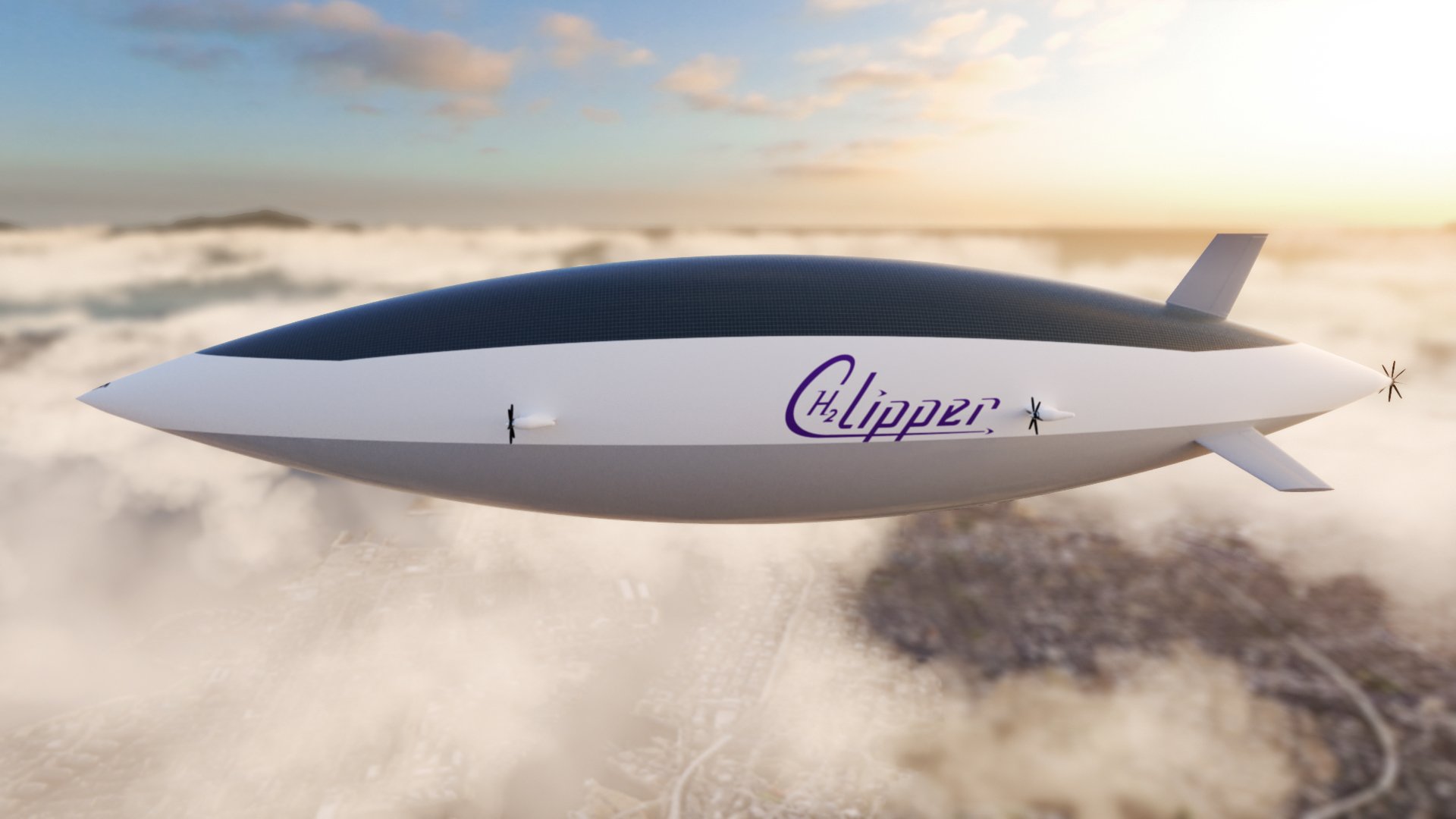Click Here to View This Page on Production Frontend
Click Here to Export Node Content
Click Here to View Printer-Friendly Version (Raw Backend)
Note: front-end display has links to styled print versions.
Content Node ID: 419344
H2 Clipper’s plans to bring a hydrogen-powered airship to market received a boost this week when Dassault Systèmes selected the California-based start-up to join its 3DExperience Lab accelerator program. The company’s planned design is intended to transport freight, including possibly hydrogen supplies for other users, in a way that it says will be between seven and 10 times faster than shipment via ship or truck and with 70 percent savings compared with the cost of using existing cargo aircraft.
The proposed H2 Clipper airship is expected to have a range of 6,000 miles at speeds of 175 mph and a vast cargo volume of 265,000 cubic feet. According to the company, its operating costs will be between 17 and 25 cents per ton-mile, based on payloads of 245 tons over 1,000 miles or 170 tons over 6,000 miles. Total lifting capacity is expected to be over 250 tons, with the range to payload ratio being driven by the quantity of fuel required for the desired flight distance.
The H2 Clipper team says that it expects to complete a detailed design and have a 40 percent sub-scale prototype ready to start flight testing in 2024, subject to sufficient funds being raised to support this work. Its objective is to have the first full-sized model flying in 2027, but it has not yet indicated when it aims to have the as-yet-unnamed airship certified for commercial service.
One benefit of joining Dassault Systèmes’ 3DExperience Lab is the opportunity to use its Catia design software, as well as the Solidworks platform for design and system engineering and the Delmia and Simulia systems for manufacturing and simulation. The company, which is part of the French aerospace group that makes the Dassault Falcon family of business jets and also fighter aircraft like the Rafale, has not said whether it is making a direct investment in H2 Clipper, which earned its first patent for the technology behind the airship in 2012. More than 100 engineers will now be recruited to the start-up to make the most of its participation in the 3DExperience Lab.
According to Dassault Systèmes' head of innovation Frédéric Vacher, the company selects companies for its accelerator program based on their ability to demonstrate significant technological breakthroughs with, "the greatest potential to positively impact and transform society in alignment with one or more sustainable development goals as outlined by the United Nations in its 2030 vision."
The H2 Clipper's propulsion system is a hydrogen fuel cell supplemented by a photovoltaic array, with electric motors turning propellers and power coming from a combination of electricity produced by proton exchange membrane fuel cells and solar power. According to the company, using hydrogen both as a fuel source and as a lifting gas for the airship maximizes both propulsion efficiency and buoyancy.
There are four side-mounted motors, each with a six-bladed propeller, plus a fifth motor to the aft with an eight-bladed propeller. These have a combined horsepower output of 33,200 shp. The side motors can be activated independently to provide low-speed maneuvering control. Stability is supported by a trio of fins on the aft end of the bullet-shaped fuselage, and the H2 Clipper is expected to use the latest fly-by-wire flight controls.
To achieve higher speeds and better fuel efficiency by minimizing drag, the airship does not have the typical external gondola compartment. Instead, part of the H2 Clipper's vast internal volume will be set aside for storing cargo, and the company intends to use a system of fixed rails to facilitate loading and unloading.
H2 Clipper sees its airship providing an alternative for moving liquefied or gaseous hydrogen supplies around the world before volumes are high enough to justify the vast investment in a pipeline or a dedicated supertanker maritime route. "We have been focusing on addressing these hydrogen infrastructure issues for more than a decade," said H2 Clipper founder and CEO Rinaldo Brutoco. "We are honored to be selected to join the 3D Experience Lab accelerator program. The opportunities this will open for us will greatly help our work of providing a rapidly scalable hydrogen infrastructure solution that is critical to realizing the disruptive potential of hydrogen."
The company acknowledges that it faces a challenge in getting the H2 Clipper certified as neither the FAA nor EASA currently have regulations specifically formulated for commercial airships. Due to current FAA restrictions on the use of hydrogen as a lifting gas, it may well have to pursue initial type certification outside the U.S. and maintains that these limits do not take account of the modern materials and safety systems that the H2 Clipper will use. Special conditions issued by EASA in February 2021 seem to offer a path to approval for the use of hydrogen as a lifting gas.
